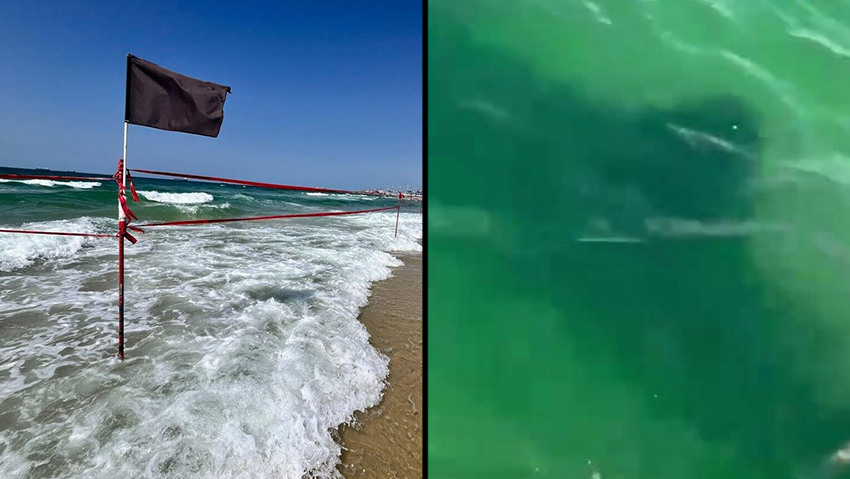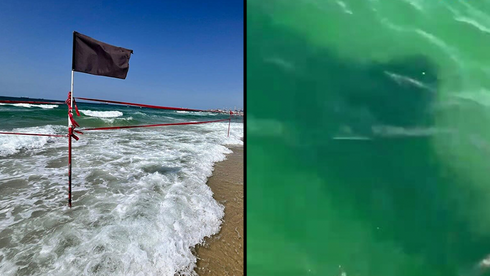A shark was sighted this Friday morning off Neve Yam beach in the Hof HaCarmel Regional Council area, near Atlit. “Everyone get out immediately,” a public announcement at the site was heard saying.
The Hof HaCarmel Regional Council said: “The council is operating in coordination with the Nature and Parks Authority and all relevant bodies. Out of caution, guidance has been issued not to enter the water until further notice. Teams on the ground are accompanying the event and ensuring public safety.”
Shark sighted off Neve Yam beach in the Hof HaCarmel Regional Council area
(Video: Section 27A)


On Thursday a shark was spotted off one of Bat Yam’s beaches as well — those beaches were closed and bathers evacuated. “The rescue teams began evacuating bathers from the water, and the beaches will remain closed until further notice,” the municipality said.
The shark was spotted on one of the city’s southern beaches by a surfer who reported it to the rescue teams. The municipality added that “after an initial check it was decided, in accordance with procedure, to close the beaches now so as not to take unnecessary risks.”
1 View gallery


Shark spotted off coast of Ashkelon earlier this week
(Photo: Gadi Kabalo)
According to indications, this is the same whale shark first seen about two weeks ago off the Ashdod coast. A swimmer testified that it was a whale shark, which is not dangerous to humans, so it is likely the same individual sighted in Ashdod and Netanya. Then, about two weeks ago, Ashdod municipality announced the closure of the city’s bathing beaches after rescue teams identified during searches what at first appeared to be a shark — which then turned out to be a whale shark, the largest fish in the world.
The Nature and Parks Authority noted that despite its enormous size, the whale shark (Rhincodon typus), also dubbed “the largest fish in the world,” is not dangerous to humans and feeds only on plankton, small fish and tiny crustaceans that it filters from the water. This species is classified as endangered by the IUCN. Its length is about 12 meters–14 meters and its lifespan may reach 100 years or more.
